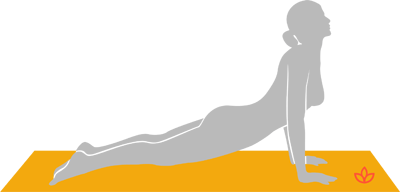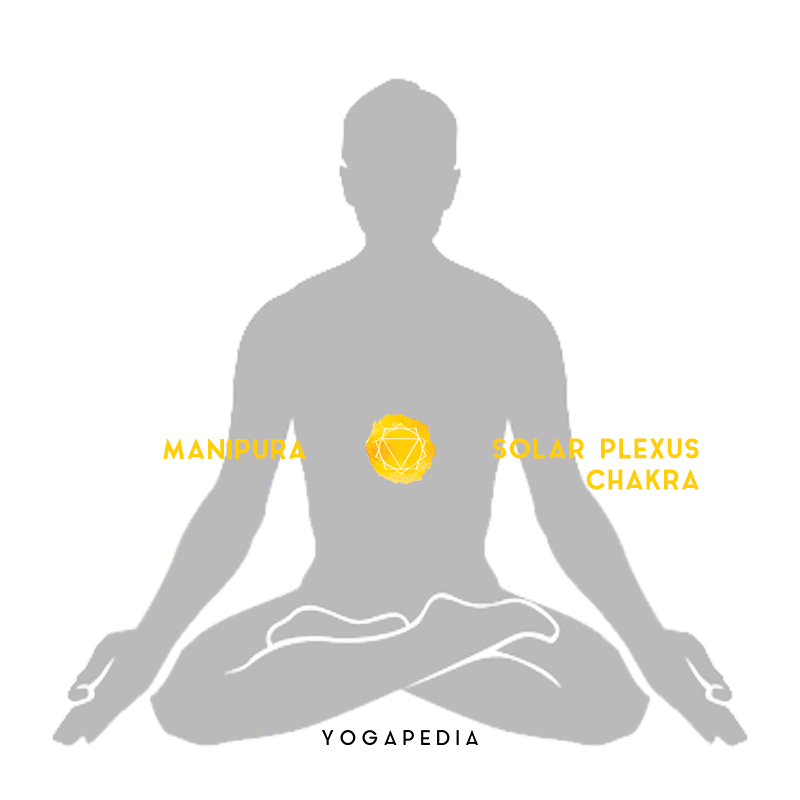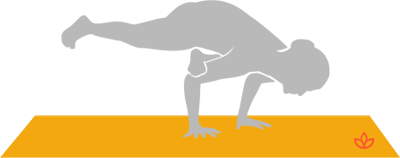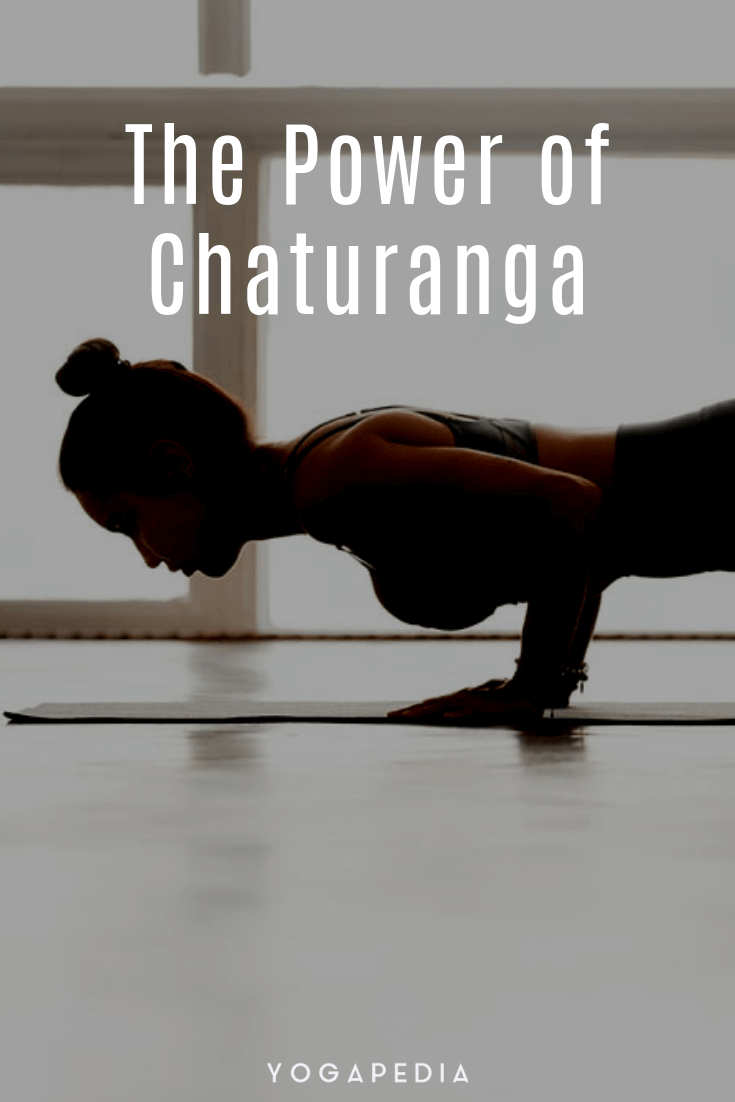“Move through chaturanga into upward-facing dog.”
These words are repeated as often as a mantra in vinyasa yoga classes the world over.
They are a call to action, drawing the body through a soothing yet strengthening sequence of postures, cleansing the physical palate ready for the next move.
But does the word chaturanga, or to give it its full name chaturanga dandasana, fill you with joy or fear?
Do you embrace the strengthening, powerful charm of this delicately balanced posture, or dread its tremble-inducing hold?
Let’s delve a bit deeper into what this very special posture is, and just why it tends to provoke such strong reactions among yogis!

What is Chaturanga?
Chaturanga dandasana, which means “four limbed staff pose” is a powerful posture. Sometimes known in English as low plank it requires both strength and coordination.
In chaturanga, the body is supported on the balls of the feet and hands, but unlike high plank pose, the elbows are bent to 90 degrees, with the shoulders and head forwards, and the arms hugging in close to the ribcage.
Why is it so hard?
For a start, because it does require good upper body and core strength in order to perform the posture with control.
Many who come to yoga do so expecting to have to work on their flexibility and range of motion. (Learn more in Bend Without Breaking: 10 Yoga Poses to Increase Flexibility in Body, Mind, and Spirit.)
It can come as quite a surprise to find that one of the most important postures in the practice requires such strength and control. Ask even weightlifters to hold chaturanga dandasana for five slow breaths and they’re likely to find it a challenge.
As Jennilee Toner, international yoga teacher and author of The Perfect Chaturanga, puts it, to master chaturanga dandasana, “a practitioner needs dedication to self-exploration, adherence to expert instruction and diligent practice.”
It is perhaps unsurprising then that there are a lot of ways to get chaturanga wrong, and lots of shortcuts the body tries to make as it learns chaturanga.
Many people try to perform the full posture before they are ready, rather than lowering their knees to the ground and building up the strength gradually. This can lead to a number of compensation mechanisms:
- The Hip Hike:
- When the core is weak or not fully engaged, it can be easier to hike the hips up. This tends to cause tension in the shoulders and neck, and means you miss out on the beautiful sense of alignment when you draw one long line of energy from the heels through to the crown of the head.
- The Lumbar Sag:
- In this variation, the belly collapses and the hips sag towards the ground. Once again, the shoulder alignment is compromised, and the lower back is unsupported and vulnerable.
- The Elbow Splay:
- This often presents in combination with the Hip Hike or the Lower Back Sag. It has several causes, but weakness or lack of engagement of the serratus anterior muscle is a common one. Rather than the elbows tracing the line of the ribcage, they splay out, causing the scapulae to wing and the hands to roll out.
None of these as a one-off are likely to be too troublesome. The problem comes if they are not corrected, and frequent repetition of these misalignments brings the potential for injury. (Learn more in 7 Simple Principles to Fix Many, if not Most, Common Asana Mistakes.)
Is it Worth the Effort to get it Right?
Absolutely!
When chaturanga dandasana is perfected, it’s a magical posture.
Here’s why:
1. The floating sensation that comes once you’ve found your equilibrium in the posture.
When all your muscles work together to support your chaturanga, it brings a feeling of effortless strength and integration.
There’s a delicious sense of length and alignment with your weight perfectly balanced between your feet and your hands.
2. The strength it builds.
We couldn’t explore chaturanga without celebrating the strength it helps you to build in your shoulders, triceps and core.
Working on chaturanga takes the rest of your yoga practice up a level (or five!). (Learn more in A 15-Minute Yoga Sequence for Core Strength.)
3. The joy of flowing through into an upward-facing dog.
Those who are drawn to dynamic styles of yoga, such as ashtanga or vinyasa, find it’s the transitions that bring such sweetness and pleasure. In the movements, the breath and body are intimately connected.
Chaturanga is one such classic transition, where the body lowers from its high plank into a strong, balanced chaturanga, ready to flip over the feet and shine the chest forward, opening the heart.

From the set-up of a perfect chaturanga, upward-facing dog feels steady, buoyant and energising.
4. The confidence that comes from mastery.
As with all things that take some effort, the pay off is all the greater for it. Mastering a posture like chaturanga can be a real confidence boost.
As if that wasn’t enough, chaturanga stimulates and energises the core, an area traditionally associated with manipura chakra.

As our centre of personal power and self-esteem, working with manipura chakra can help build courage and overcome self-doubt.
5. Opening the gateway to arm balances.
If you want to build the strength, confidence and stability for fun postures such as crow, flying pigeon or crook’s pose, chaturanga dandasana is the place to start.

As well as improving upper body strength, it teaches you to trust your arms to hold you. It also gets you used to taking your shoulders forward of your wrists, an essential element of many arm balances.
Convinced yet?
Then I’ll leave you with a few tips for improving your chaturanga:
- Lower your knees to the ground first. Once your knees are secure, keep your core engaged, shift your hips forward so that there’s a diagonal line from your knees to the crown of your head, and slowly lower your body to the ground, keeping the elbows pressing into your ribcage. This will help build strength and body awareness for the full posture.
- Perform mini-chaturanga push ups. In other words, do exactly as described above, but at the bottom, press your palms into the ground to lift yourself back to the starting point. Repeat for 3 sets of 10 every day, and you’ll be chaturanga-ing in no time. (Learn more in How to Hold Proper Chaturanga Alignment)
- Use a strap to help you find the alignment. Make a loop with your strap as wide as your shoulders and place it around your upper arms, just above your elbows as you come into your high plank pose. From high plank, press your heels forward so that your shoulders come forward of your wrists and bend your elbows, lowering into a chaturanga supported by the strap. The strap stops your elbows splaying out and supports the weight of your torso. This variation also teaches you not to lower too low, a very common mistake in chaturanga dandasana – remember, the shoulders should never dip lower than the elbows.
Finally, try not to rush the process! Trust that your body will find the strength it needs in its own time.
And if you’re ever feeling disheartened by this challenging posture, rest assured, you’re not alone.
It’s a rare yogi who hasn’t found themselves wobbling through a shaky chaturanga transition at some point!

During These Times of Stress and Uncertainty Your Doshas May Be Unbalanced.
To help you bring attention to your doshas and to identify what your predominant dosha is, we created the following quiz.
Try not to stress over every question, but simply answer based off your intuition. After all, you know yourself better than anyone else.